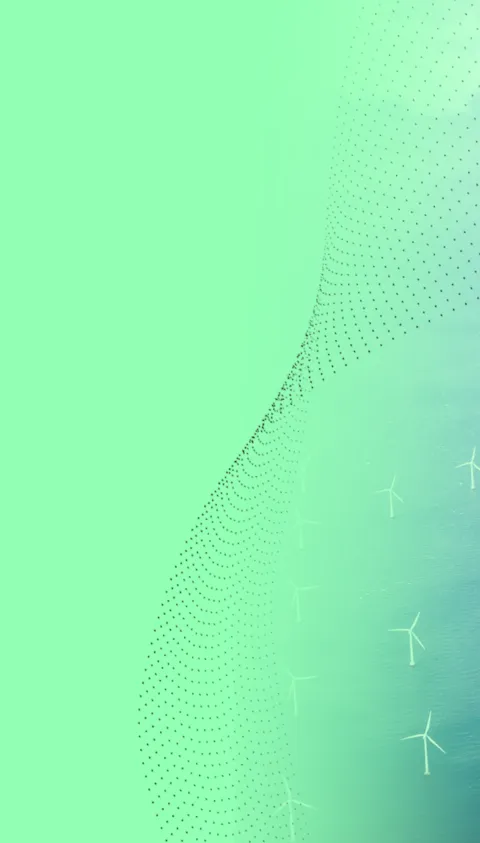

The global market for offshore wind energy is expanding rapidly, and it's poised to play a critical role in achieving a renewable and climate-neutral future. At Digital Solutions, we are are committed to being a part of this exciting and transformative journey.
Our Experts addresses your questions
We know that navigating the complexities of offshore wind can be challenging, and we're here to help. Our team of experts has come together to provide clear, insightful answers to the most frequently asked questions about fixed and floating offshore wind. Whether you're curious about the technology, the benefits, or the future of offshore wind, we've got you covered.
We believe that collaboration and knowledge-sharing are essential for the success of our planet. That's why we're not just answering your questions - we're inviting you to ask more. Submit your questions, and our experts will address them in future episodes. Together, we can build a brighter, more sustainable future.
Explore the Offshore Wind Explained video series library:
What is a floating offshore wind farm?
In our first episode, our Business Development Director, Ole Jan Nekstad, explains what a floating offshore wind farm is, its expected electricity production, and the duration of the design process. He also discusses how our widely used software, Sesam, has supported the industry for over 50 years, transitioning from oil and gas to offshore wind.
What simulation methods are available for floating offshore wind substructures?
Kai-Jia Han, the Group Leader of the Hydrodynamics Development Team, discusses various simulation methods available in Sesam for designing and assessing floating offshore wind substructures, which are becoming increasingly important as the offshore wind industry moves to deeper waters.
How does a floating wind turbine substructure work, and how can it be modelled in Sesam?
Jose highlights Sesam's innovative concept modeling approach, streamlining design processes while enhancing performance in model creation and analysis. With a focus on user experience, Sesam offers both a user-friendly interface and customizable Python capabilities, supporting diverse computational needs from local setups to cloud solutions. This episode underscores Sesam's commitment to advancing renewable energy infrastructure through our digital engineering solutions.
What are the differences between frequency domain and time domain methods?
Jens discusses the differences between frequency domain and time domain analyses for floating offshore wind substructures. He also delves into innovative methodologies in Sesam software, highlighting their benefits and impact on the future of floating offshore wind.
How does the turbine size impact the selection of a floating wind turbine substructure?
Ole Jan explores how increasing turbine sizes- now reaching up to 22 MW and 310, meter rotor diameters, affect floating substructure selection. Larger turbines bring greater wind and wave forces, necessitating advanced simulations and structural analyses. The pros and cons of various substructure types (Semisubmersible, Spar, TLP and Barge) are discussed, highlighting how our tools Sesam and Bladed optimize these complex systems for stability and efficiency.
What is an offshore wind substation and how can it be designed?
In this episode of Offshore Wind Explained, Ole Jan Nekstad, with over 40 years of experience at DNV, shares his insights on offshore wind substations, and takes you through the critical role of offshore wind substations in renewable energy.
Transportation & installation of offshore wind and its associated risks
The offshore wind industry moves into deeper waters, and the demand for cost-effective and innovative solutions is higher than ever. Wenzhe Zhang, our Technical Support Engineer, dives into the challenges and strategies for reducing costs in offshore wind transportation and installation.
He explores how we can lower the levelized cost of energy (LCOE) for offshore wind projects by addressing installation vessel limitations and infrastructure challenges. He also discusses the cost differences between fixed and floating wind turbines and highlights how DNV’s non-linear coupled analysis tool, Sesam, improves risk management in complex marine operations.
Which foundation types are available for fixed offshore wind?
Mathias Schult explores the different types of fixed offshore wind turbine substructures - a key component in renewable energy. He dives into the different types of fixed offshore wind substructures, from gravity-based foundations to monopiles and jackets, breaking down the unique benefits and engineering considerations for each, based on seabed and depth conditions.
What type of loads are acting on fixed offshore wind structures?
In this video Jose Pedro Cunha addresses a frequently asked question: “What type of loads are acting on fixed OWT structures? And how can they be modelled in Sesam?”
Jose explores the forces these substructures face—like aerodynamic, hydrodynamic, and gravitational loads—and shows how our Sesam software provide precise load modeling and analysis for resilient, efficient designs.
What are design load cases and how many do we need to simulate a fixed offshore wind turbine structure?
Renata Grabowsky, our Sesam Product Marketing Manager, dives into the vital role of design load cases DLCs for fixed offshore wind turbines. These DLCs are essential for ensuring the safety, reliability, and efficiency of turbines operating in challenging marine environments.
With Sesam’s cloud-powered simulations, engineers can run complex design load analyses quickly, driving faster project timelines and enhanced design optimization.
How can Bladed and Sesam design fixed offshore wind turbine structures?
A common question we get asked is: How Sesam and Bladed software be integrated to improve offshore wind turbine design? In this episode, Dilek Örs, our Bladed Technical Support Engineer, answers this question by exploring two key simulation workflows.
The first is Integrated Analysis, which combines Sesam and Bladed for wind and wave load analysis, fatigue, and ultimate strength assessments in one seamless workflow. The second is Super Element Analysis, offering flexibility for complex support structures and aeroelastic analysis without sharing detailed design specifics.